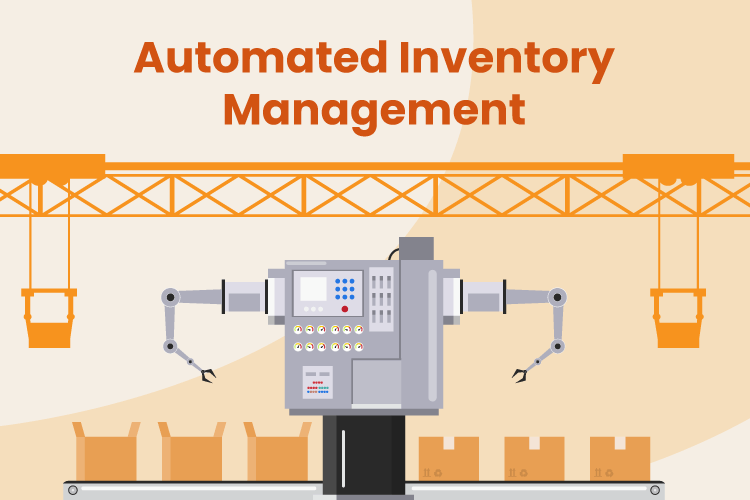
Revolutionizing Business Operations: The Power of Automated Inventory Management
In the fast-paced landscape of modern business, the role of Automated Inventory Management is proving to be a game-changer. This article delves into the transformative impact of automated systems on inventory control, exploring the benefits, implementation strategies, and the future trajectory of this technology.
The Essence of Automated Inventory Management
Automated Inventory Management involves the use of technology to streamline and optimize the tracking, monitoring, and control of inventory. This encompasses a range of technologies, including barcode scanners, RFID systems, and advanced software solutions. The primary goal is to enhance accuracy, efficiency, and overall effectiveness in managing stock levels.
Precision in Tracking: Minimizing Errors, Maximizing Accuracy
One of the key advantages of Automated Inventory Management is its ability to minimize errors in tracking. Traditional manual methods are prone to inaccuracies due to human error, leading to issues such as stockouts or overstocking. Automated systems employ precision technologies to ensure real-time and accurate tracking of inventory levels, mitigating the risks associated with human mistakes.
Real-Time Visibility: Empowering Informed Decision-Making
Automated Inventory Management provides businesses with real-time visibility into their stock levels and movement. This transparency empowers decision-makers to make informed choices about reorder points, replenishment strategies, and overall inventory optimization. The ability to access up-to-the-minute data is crucial for agile and responsive supply chain management.
Enhanced Efficiency: Streamlining Workflows and Processes
Automation brings a significant boost to efficiency by streamlining various inventory-related workflows and processes. From order processing to stock replenishment, automated systems can perform tasks at a pace and precision unmatched by manual methods. This efficiency not only saves time but also allows businesses to allocate resources more strategically.
Cost Savings: The Financial Impact of Automated Systems
Cost savings are a notable benefit of Automated Inventory Management. By minimizing errors, reducing labor-intensive tasks, and optimizing stock levels, businesses can achieve significant cost efficiencies. The financial impact extends to areas such as reduced holding costs, better negotiation power with suppliers, and improved overall profitability.
Implementation Strategies: Navigating the Transition to Automation
Implementing Automated Inventory Management requires a thoughtful strategy. Businesses need to assess their current processes, choose suitable technologies, and train staff accordingly. The transition may involve integrating new software, deploying hardware like barcode scanners, and establishing protocols for data accuracy. A phased approach with thorough testing is often recommended to ensure a smooth transition.
Scalability and Adaptability: Growing with the Business Needs
One of the strengths of Automated Inventory Management is its scalability and adaptability. As businesses grow or experience changes in demand patterns, automated systems can flexibly accommodate these shifts. This scalability ensures that the inventory management solution remains aligned with the evolving needs of the business, providing long-term value.
Integration with Other Systems: A Holistic Approach
For optimal results, Automated Inventory Management systems are often integrated with other business systems, such as Enterprise Resource Planning (ERP) or Customer Relationship Management (CRM) software. This integration facilitates seamless data flow across various departments, enabling a holistic approach to business operations and enhancing overall organizational efficiency.
The Future Landscape: AI and Predictive Analytics
Looking ahead, the future of Automated Inventory Management holds exciting possibilities with the integration of Artificial Intelligence (AI) and predictive analytics. AI-driven systems can learn from historical data, anticipate demand patterns, and optimize inventory levels dynamically. This predictive capability ensures that businesses stay ahead of market trends and maintain a competitive edge.
Explore the Future: Automated Inventory Management at www.misuperweb.net
For those keen on exploring the transformative potential of Automated Inventory Management, visit Automated Inventory Management. The website offers insights, resources, and updates on the latest advancements in inventory management technology. Discover how automation can redefine your approach to stock control and business efficiency.
Conclusion: Embracing Efficiency through Automation
In conclusion, Automated Inventory Management stands as a beacon of efficiency in the business world. From precision tracking to real-time visibility and scalability, the benefits are evident. As technology continues to evolve, businesses that embrace and harness the power of automation are poised to navigate the complexities of inventory management with greater agility and success.
